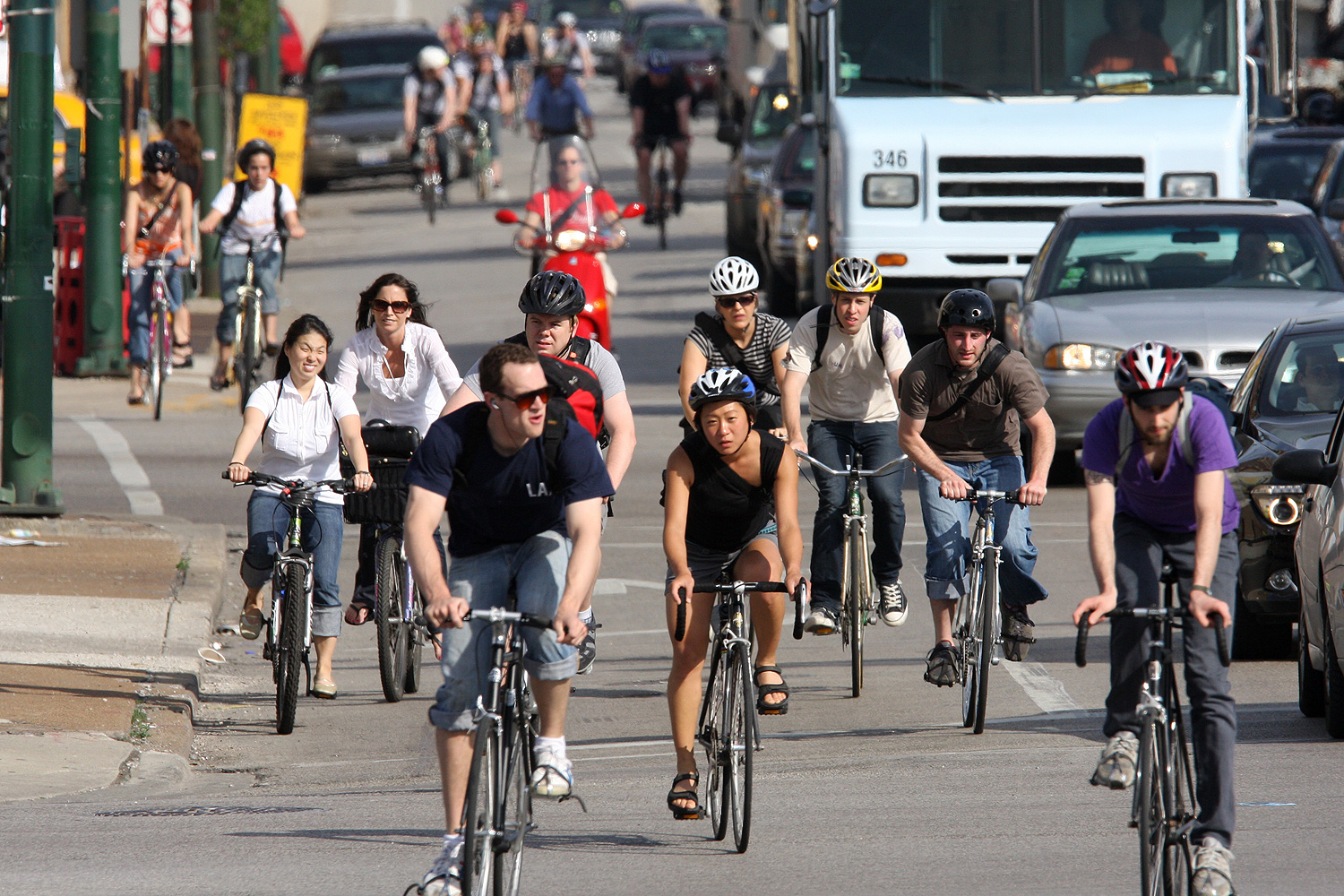Chicago's Bike Week wraps up tomorrow, culminating with the annual Bike to Work rally in Daley Plaza on Friday morning. (For sponsor purposes, the city is predicting 3,000 attendees tomorrow, about as many as signed up for the Bike Commuter challenge.) So I was curious: where was everyone coming from?
I was inspired by the Active Transportation Alliance's new Bike Monitoring Report, which indicates a significant increase in bike commuting in the city over the past couple decades. And bike commutes represent a small percentage—about a fifth—of non-recreational bike trips, which average about 125,000 a day, most of which are "utilitarian" errand trips. According to the ATA's figures, that's about three times the number of cars served by Western Avenue every day.
So I took the most recent American Community Survey data, showing bike commuter share by census tract, and combined it with the city's map of bike routes to see where Chicago's bike commuters live, compared with the infrastructure the city provides them. (Update: as Steven Vance notes, not all the routes listed by the city have actual bike infrastructure; some are unmarked and—until recently—suggestions for sensible places to ride.)
The heaviest concentrations aren't terribly surprising: Logan Square, West Town, Ukrainian Village, and Pilsen, along with the UIC area, Evanston, and Hyde Park. They're college and post-college areas, and in the case of the former, perfect biking distance from downtown. (I can usually shave 10-20 minutes off my 4.5 mile commute by biking instead of taking the bus.) But, at a glance at least, demographics don't seem to be the only correlation. Neighborhoods with greater bike-route coverage tend to have more bike commuters.
There's other anecdotal evidence tying better infrastructure to an increase in commuting and other practical biking. In Crain's, Hailey Lee asked local bike-shop owners if the Divvy bikeshare system was eating into their sales. What's happening is more interesting:
At Kozy's, comfortable, all-purpose commuter bikes are flying out the door, with a 30 to 40 percent jump in sales since the start of Divvy. Sales of all other bike types have remained stagnant. Mr. Chase says half of his customers who use Divvy eventually return to the store to purchase a bike.
“Riders use Divvy rentals like training wheels before committing to a permanent bike,” Mr. Chase said.
[snip]
On the Route also had a 50 percent increase in sales of similar utility-oriented commuter bikes, with a simultaneous, equal drop in the sale of fitness-oriented bikes.
Maybe in a couple years, the big blue monsters will finally sell Chicagoans on the Dutch bikes they most resemble.



